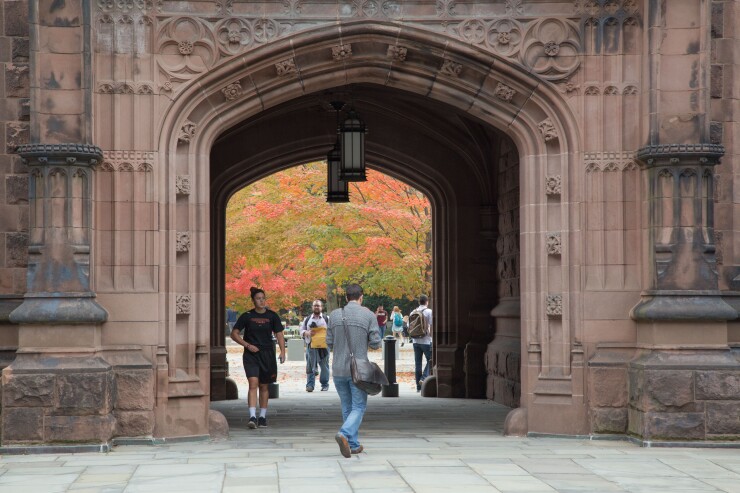Moody’s Investors Service raised its outlook on U.S. nonprofit higher education sector to stable from negative on Thursday, citing expected narrowing gaps between expense and revenue growth.
Also on Thursday, S&P Global Ratings affirmed its “bifurcated” outlook for the sector, which includes a
Joseph Krist, publisher of Muni Credit News, said he agreed with the bifurcated approach. “The
“Higher education is going to be facing continued challenges in the near term,” said Tom Kozlik, managing director at Hilltop Securities. Large public and well-known institutions in states with good credit quality will have an “easier time.” “Small private institutions with less reach and less name or program recognition will have a harder time.”
He said Hilltop had a “cautious” outlook on public higher education and a “negative” one on private higher education.
In Thursday’s report, Moody’s said, “in 2024 higher education revenue growth will accelerate, … moderating expense growth will prevent a material erosion of operating margins, … reserves will remain sound as investment returns rebound and gift revenue grows,” and “adjusted debt will fall as high interest rates discourage borrowing and alleviate pension liabilities.”
Moody’s said revenues will climb less than expenses in 2024 but the gap between the two will be narrower than the 2023 gap.
Of the 414 issues it rates, 6% are speculative grade, 3% have positive outlooks and 10% have negative outlooks.
S&P said it expected a “more pronounced” credit divergence within the sector in 2024 than in 2023. “We expect to see more operating deficits, especially at the lower end of the ratings scale.”
S&P’s negative outlooks are proportionately spread among Midwest, Northeast, Southwest, and Southeast institutions. They are much rarer among institutions in the West.
Of S&P’s 447 rated U.S. institutions, 9% have negative outlooks and 6% have positive one, and 7% have speculative ratings.
In fiscal 2023, average endowment returns were 8.7%.
Moody’s said due to high interest rates it expected higher education borrowing to “remain relatively low.” S&P said most schools would likely “moderate capital spending as cash-flow generation is less robust.”
Fitch Ratings has a negative outlook on the sector.
